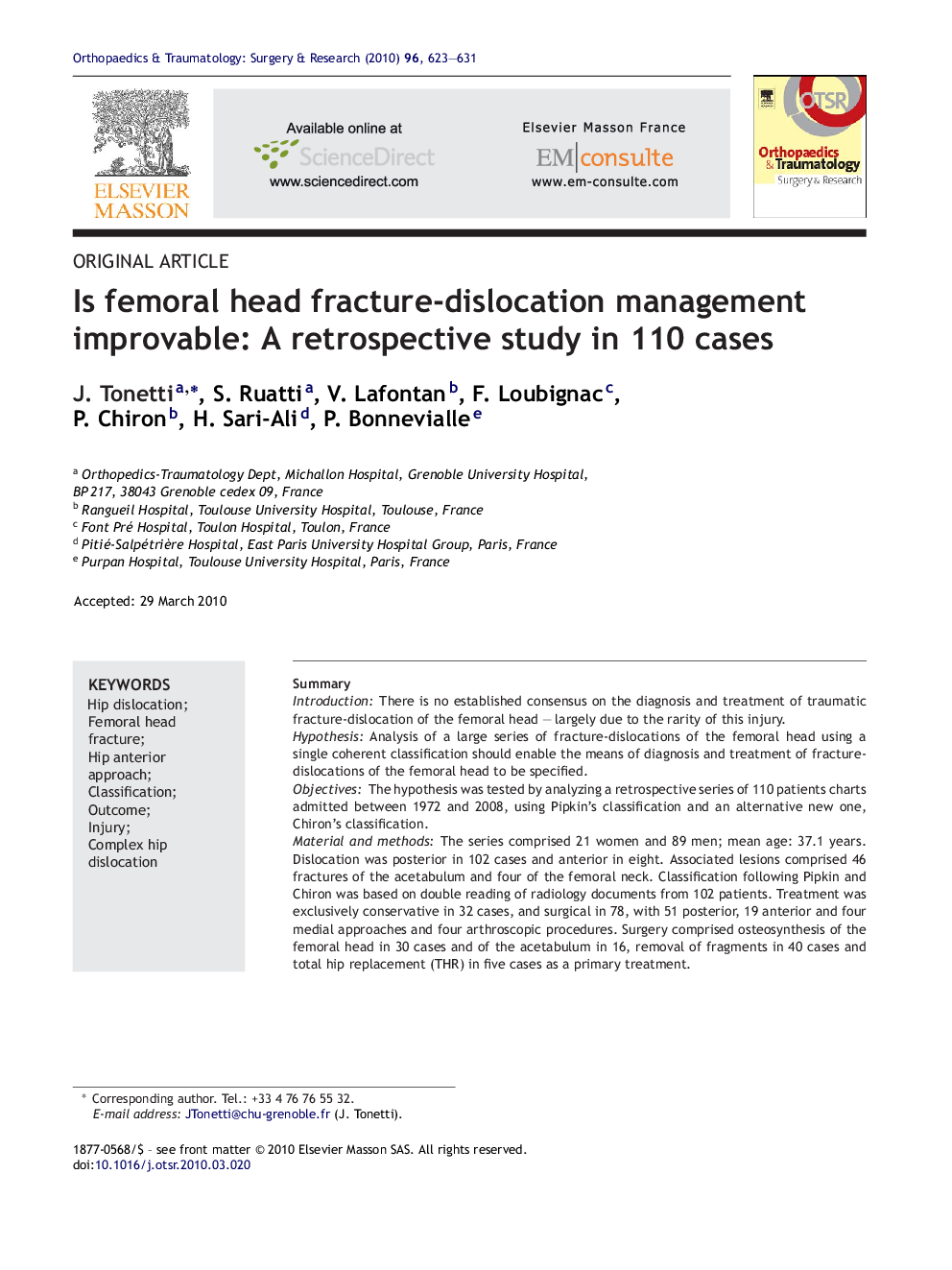| Article ID | Journal | Published Year | Pages | File Type |
|---|---|---|---|---|
| 4082212 | Orthopaedics & Traumatology: Surgery & Research | 2010 | 9 Pages |
SummaryIntroductionThere is no established consensus on the diagnosis and treatment of traumatic fracture-dislocation of the femoral head – largely due to the rarity of this injury.HypothesisAnalysis of a large series of fracture-dislocations of the femoral head using a single coherent classification should enable the means of diagnosis and treatment of fracture-dislocations of the femoral head to be specified.ObjectivesThe hypothesis was tested by analyzing a retrospective series of 110 patients charts admitted between 1972 and 2008, using Pipkin's classification and an alternative new one, Chiron's classification.Material and methodsThe series comprised 21 women and 89 men; mean age: 37.1 years. Dislocation was posterior in 102 cases and anterior in eight. Associated lesions comprised 46 fractures of the acetabulum and four of the femoral neck. Classification following Pipkin and Chiron was based on double reading of radiology documents from 102 patients. Treatment was exclusively conservative in 32 cases, and surgical in 78, with 51 posterior, 19 anterior and four medial approaches and four arthroscopic procedures. Surgery comprised osteosynthesis of the femoral head in 30 cases and of the acetabulum in 16, removal of fragments in 40 cases and total hip replacement (THR) in five cases as a primary treatment.ResultsMean follow-up was 37 months. THR was performed in 25 cases: five as a primary treatment and 20 secondarily, 15 of which were performed within the first 6 months. Significant predictive factors for THR were: old age, Chiron grade 3, and femoral neck fracture. The THR and non-THR groups differed on the Chiron but not on the Pipkin classification at the time of the injury. Specific treatments were not predictive of evolution. Fragment removal was more often by a posterior than an anterior or medial approach.ConclusionThe Chiron classification showed prognostic value for evolution to THR; to be reproducible, it needs to be based on CT data. No particular mode of treatment emerged as preferable. Better initial lesion analysis should enable prognosis and target indications.Level of evidenceLevel IV Retrospective study.
